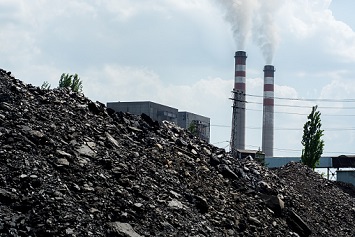It has been clear for some time that deregulatory actions at the federal level will slow but not stop the decline of coal as an energy source in the United States. Still, the EPA continues to do what it can to ensure that coal remains a key component of the nation’s energy portfolio. The Agency’s major action was replacement of the Obama EPA’s Clean Power Plan (CPP) with the Affordable Clean Energy (ACE) rule. The intent of the ACE is to give most coal-fired power plants the option to remain in operation—an objective the coal industry argued was the exact opposite of what the CPP was designed to achieve. On a much smaller scale, the EPA has now issued a final rule that will allow, at least for the time being, the continued operation of six small electric utility steam generating units (EGUs) located at three facilities in Pennsylvania and one facility in West Virginia.

ilkaydede / iStock / Getty Images Plus / Getty Images
Subcategorization
The final rule amends the EPA’s 2012 National Emission Standards for Hazardous Air Pollutants (NESHAP) for Coal- and Oil-Fired Electric Utility Steam Generating Units (more commonly, the Mercury and Air Toxics Standards (MATS)). In the MATS, the EPA declined to establish a separate subcategory with less stringent emissions limits for small EGUs; those facilities had informed the Agency that it would be cost-prohibitive to comply with the MATS’s emissions limits. The EPA responded that it did not have the authority under the Clean Air Act (CAA) to subcategorize based on the cost of compliance. Furthermore, the Agency stated that “small entities use the same type of fuel as other units, have the same type of combustor designs, and can use the same types of controls, and so there is no difference in the HAP emissions from such units.”
Emissions differences
In the new rule, the EPA revises its previous position with regard to the combustion of eastern bituminous coal refuse (EBCR) at the six small EGUs. The amendment applies specifically to emissions of hydrochloric acid (HCl) and sulfur dioxide (SO2)—both of which serve as surrogates for all acid gas hazardous air pollutants (HAPs) emitted from EGUs under the MATS—at EGUs that have a net summer capacity no greater than 150 megawatts (MW) and that are designed to burn and that are burning 75 percent or more (by heat input) EBCRon a 12-month rolling average basis.
“We now recognize that there are differences in the acid gas HAP emissions from EGUs firing EBCR compared to EGUs firing other types of coal, including those firing types of coal refuse other than EBCR,” states the Agency. “Specifically, the EPA recognizes that there are differences between anthracite coal refuse and bituminous coal refuse, and that the type of fuel used leads to differences in the acid gas HAP emissions from EGUs firing those respective fuels.”
The Agency explains that bituminous coals (and, thus, bituminous coal refuse) from the Appalachian and interior regions of the United States have higher sulfur and chlorine contents than anthracite or coals of all types from the western U.S. (and, thus, anthracite coal refuse or western bituminous and subbituminous coal refuse), and these differences lead to differences in emissions of acid gas HAP.
Those differences may impact the unit’s ability to control those emissions. For example, the injection of limestone into a unit’s combustion zone has been found to control emissions of acid gases. But the EPA has found that there are operational and design limits on the ability of the subject EGUs to provide an adequate amount of limestone to reduce SO2 and HCl emissions beyond a certain point. In addition, the EPA agrees with industry that the reduction of SO2 and acid gases through increased injection of limestone is asymptotic, meaning significant additional limestone does not result in further significant acid gas emissions reduction.
CAA authority
The EPA notes that under CAA section 112 (which established the NESHAP program), the Agency has the discretion to “… distinguish among classes, types, and sizes of sources within [an industry] category or subcategory in establishing” standards.
“Based on the EPA’s better understanding of the differences in anthracite coal refuse and bituminous coal refuse, and the acid gas HAP emissions profile associated with each, the EPA has now determined that, contrary to its earlier position, it is appropriate to establish a new subcategory for certain units firing EBCR,” the Agency states.
While the amendment will allow higher acid gas HAP and SO2 emissions from the six EGUs compared with the emissions standards in the 2012 MATS, the Agency says it does not expect emissions of other pollutants to change under the amendment.
Moreover, the amendment provides the benefit of reducing the size of coal refuse piles that, says the Agency, are prone to spontaneous internal combustion, emit uncontrolled acid gases and other HAP, and put surface and groundwater at risk of contamination.
Finally, the EPA notes that when the amendment was proposed in 2019, there were 10 small EGUs that would benefit from a final rule. Four of those EGUs have since either retired or announced plans to switch to natural gas.